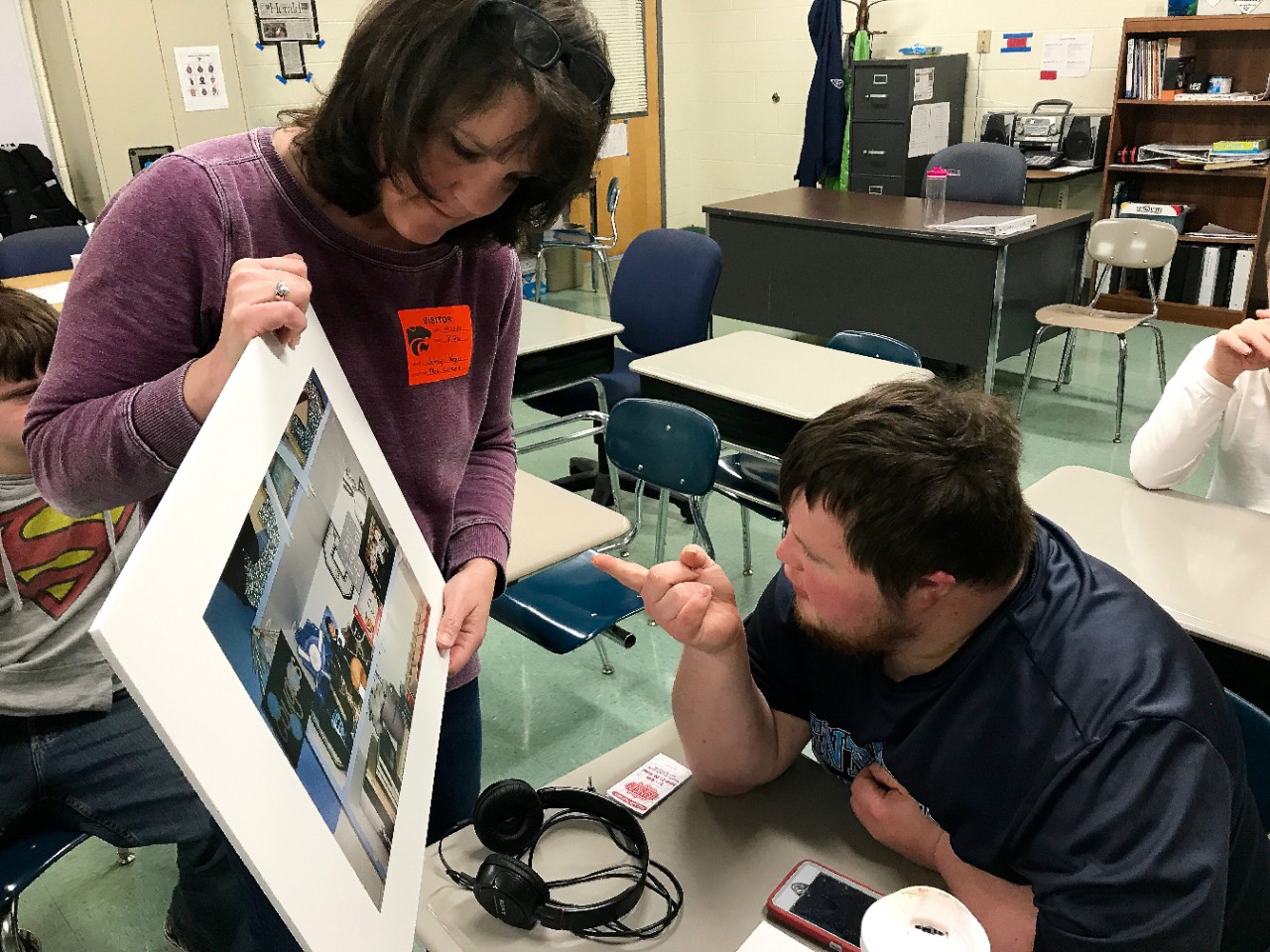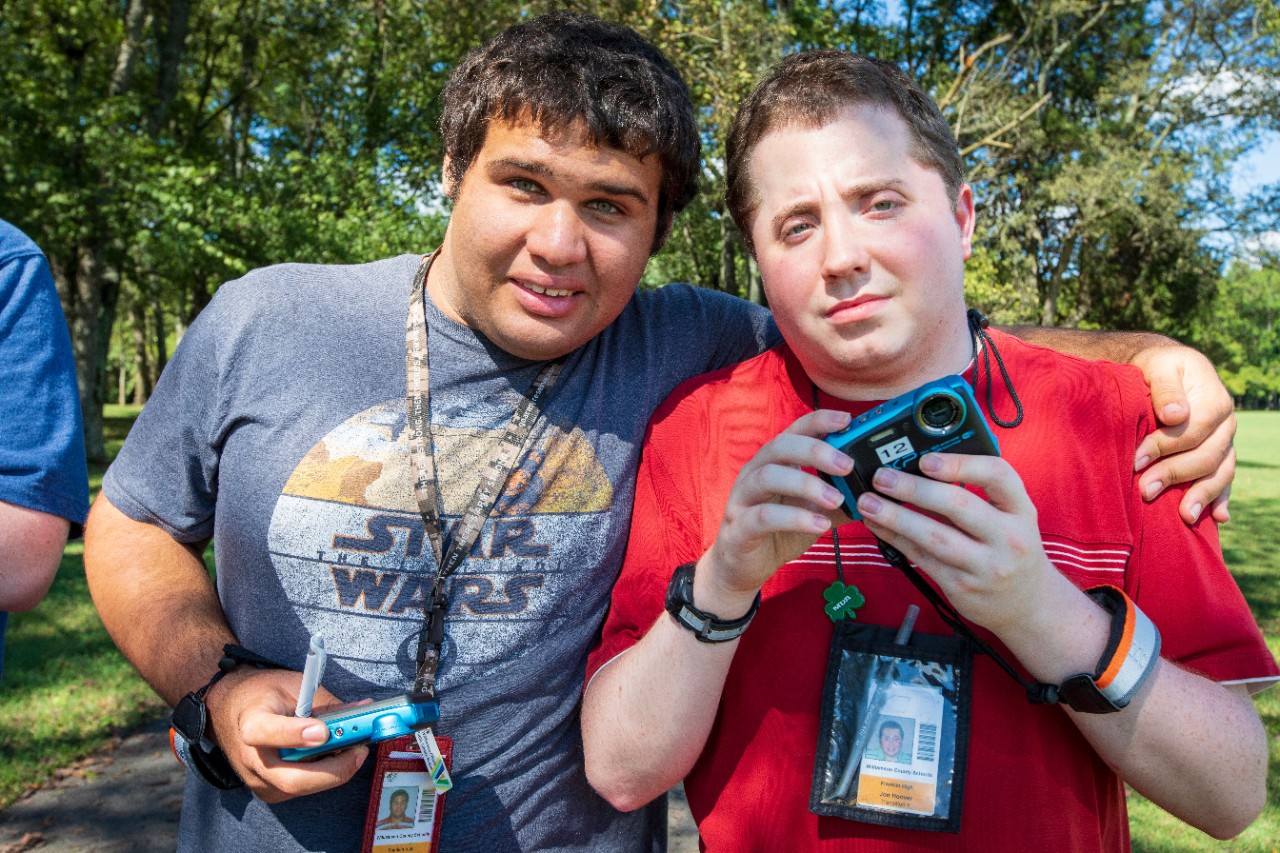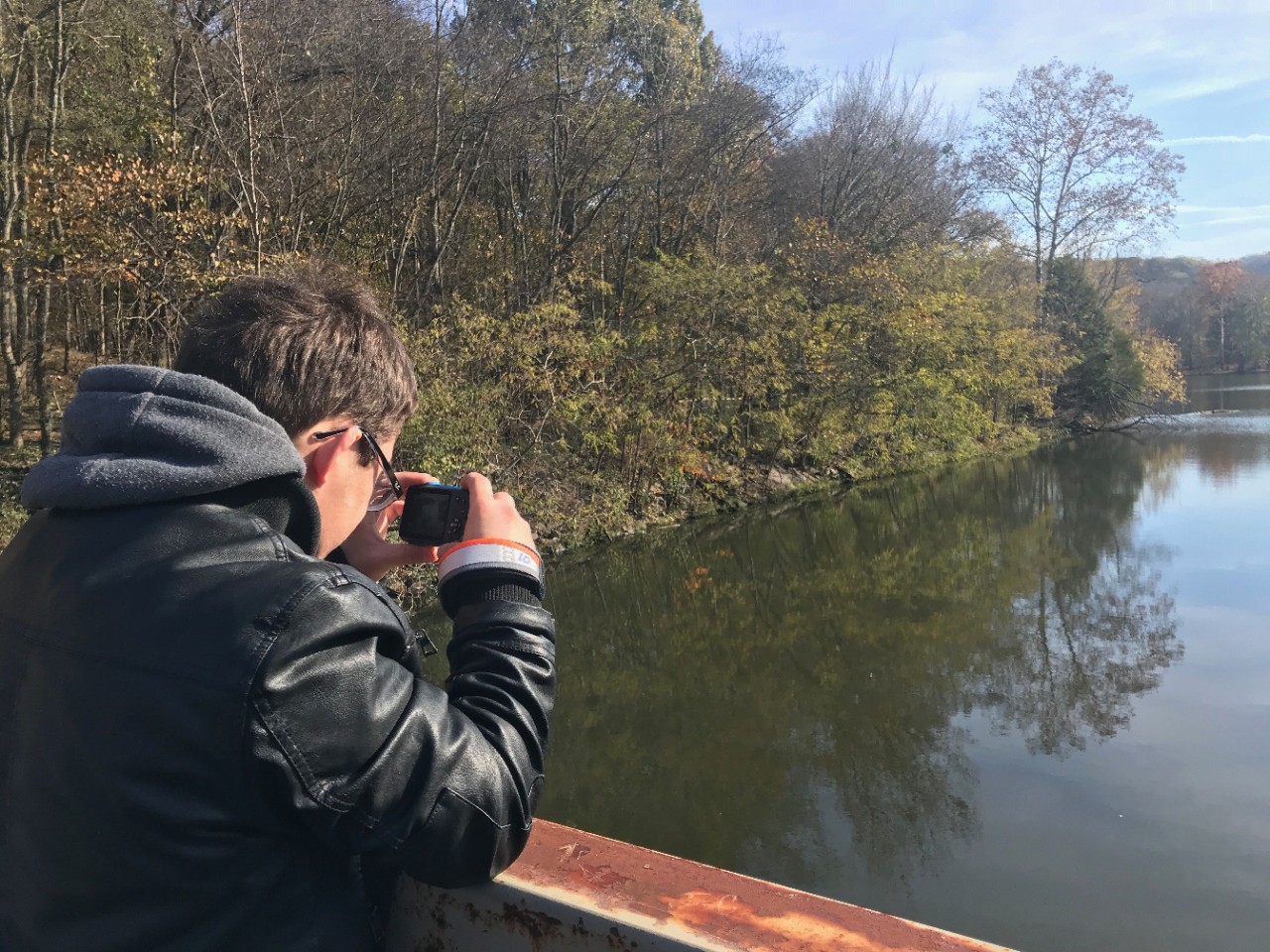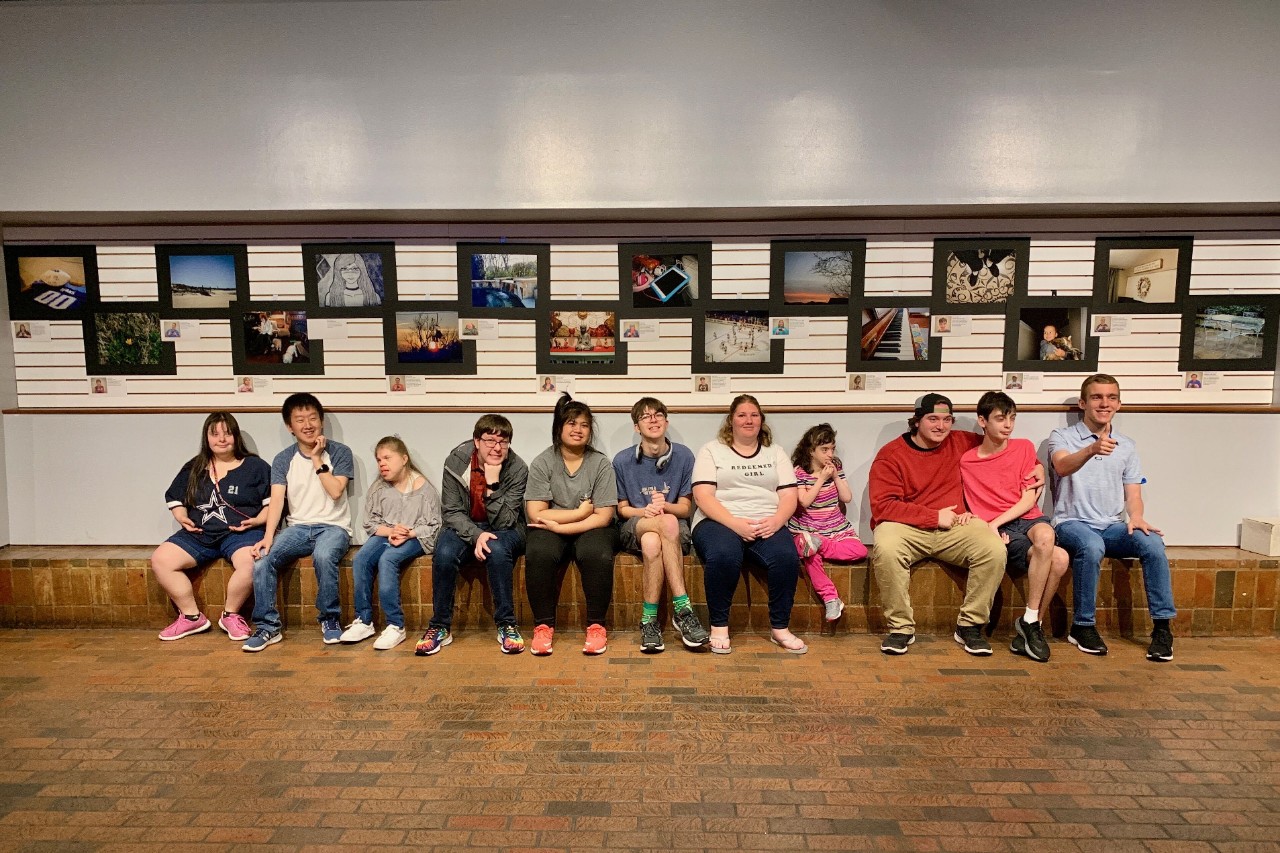Breaking Ground 98 - AbleVoices
by Jen Vogus, 2007 Partners in Policymaking® Leadership Institute graduate
Last March, I organized a field trip for Centennial and Franklin High (Williamson County) Transition II (18-22 year-old) special education students to view their photographs that were on exhibit at the Vanderbilt Kennedy Center. The photos were a result of the project AbleVoices: Sharing Who We Are Through Our Photographs. After viewing the exhibit, I asked the students, “How does it feel to have your photos hanging on the walls of Vanderbilt University?” They all cheered, and one student said, “My mind is blown!” This energy and excitement also sums up how I’ve felt over the past few years as I’ve developed and now lead AbleVoices photography projects across the Williamson County school district.
AbleVoices is a hands-on photography program based on the “photovoice” approach developed in 1993 by researchers Caroline Wang and MaryAnn Burris. Photovoice provides cameras to those who often aren’t heard to give them opportunities to create pictures as a means of communication, self-expression, and self-advocacy. On a personal level, people can build their social skills, increase their photography knowledge and skills, and grow more confident. On a broader level, there can be positive change from community members seeing the gifts of the participants and learning more about how they see the world.
The goal of AbleVoices is to provide the tools and training for participants to create images that communicate their preferences, interests, strengths, and goals for the future, as well as to promote inclusion of individuals with disabilities in the world. The final part of an AbleVoices project is to hang the photographs with captions in a gallery so family, friends, and the community can learn about and celebrate the photographers.

AbleVoices has been a blend of a decade’s worth of my experiences, research, and passion. I am an educator, a photographer, and a parent of a 17-year-old son with physical and intellectual disabilities. When Aidan began school, he was (and is) nonverbal and had few ways to communicate with his teachers and peers. So I began taking pictures of Aidan’s interests and capabilities and sent the photos with captions to school with him. This opened up Aidan’s world, and his teachers and peers truly got to know him as a person, creating lasting, positive relationships. It was these early experiences that planted the seed of AbleVoices. The power of photography became clear to me, and I wanted to use it to help others whose voices may not be heard.
I am drawn to young adults transitioning from school to adulthood because it is such a critical time in their lives, when important changes occur. For many of these students, communication is one of their biggest challenges. I see photography as a helpful way for students to visually express their strengths and interests and to help them communicate their future life goals. Images can show in an instant what words or text take much longer to express. In other words, I see it as an additional way for the photographers to practice speaking up for their needs, sharing their preferences and interests, and making decisions about their future. Research tells us the more opportunities students have to discuss their interests and preferences, explain their goals, and actively plan for their future, the more control they will have over their own lives.
Working with a different Transition II (18-22 year-old) class each semester, students participate in lots of activities. We start by getting to know each other. Then students are provided with digital cameras and first learn how to use them by engaging in photo scavenger hunts. We discuss the best ways to take a good photo so they are better able to tell their visual story. We look at lots of pictures that start interesting class discussions, and also take multiple field trips to view photography exhibits and take photographs. Finally, students write captions for the photos they took that they want to exhibit, we mount and frame them, hang their pictures in the gallery, and have an opening reception celebrating them and their work.

The success of AbleVoices relies on multiple forms of support. Sharon Bottorff, the Executive Director of The Arc Williamson County, helped us find a “home” in the Williamson County Community Services Building for our photo galleries. The Arc Williamson County also provides the space for our receptions, and assists with our donations and grants that fund the cameras, photo printing, and programming costs. I am also thankful for Williamson County’s Marie Wicks, Maria Griego, and the Transition II teachers for welcoming me into their classrooms. Lastly, I’m grateful to all of the students. It truly is a joy and honor for me to work with these young adults and get to experience all they are capable of doing through their photographs!
If you’re interested in seeing these great artists’ work, please visit AbleVoices exhibits at the Williamson County Community Services building (129 W. Fowlkes St., Franklin, ongoing exhibits), Parthenon Museum (Sep-Dec 2019), Tennessee Performing Arts Center’s Polk Theater Gallery (May-July 2020), and Vanderbilt Kennedy Center (Sep-Dec 2020). Keep up to date on all we are doing on Facebook (@ablevoices), Instagram (@ablevoices), YouTube (AbleVoices), or our website (www.ablevoices.org)!
Jen Vogus is a 2007 Partners in Policymaking® Leadership Institute graduate and a board member of The Arc Tennessee. You can contact her at jen@ablevoices.org.
